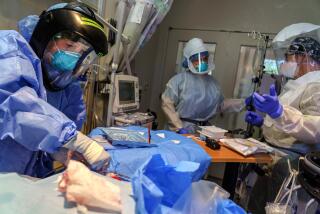In Nepal, uncertainty, fear settle like dust following aftershock
The earth rattled yet again.
It had been nearly three weeks since these temblors began to rock our lives in Nepal, one jolt at a time. Just when we thought the aftershocks of the powerful April 25 earthquake were getting milder and life was starting to feel normal again, another major one threw us off.
A week ago, in the shadow of the quake-damaged Basantapur Palace in Katmandu, the capital, I was with a TV crew shooting a story about Nepalese returning to their routines. People had set up shops beside the tattered tarpaulin sheets where families had been living since the big quake. Children told me enthusiastically about school restarting soon.
I too had started worrying less. I had switched back to my normal backpack instead of the heavy emergency rucksack I had lugged around since the April quake, filled with items including spare phone chargers and a light blanket.
But when the magnitude 7.3 aftershock hit May 12, I found myself once again among hundreds trying to push through the crowd, almost in a daze, struggling to get to safety.
An old woman in a blue sari grabbed my arms and hugged me tightly. She murmured all the prayers she could. I tried soothing her, saying it was going to be OK, my eyes still fixated on the ravaged roof of the palace, engulfed in dust.
I was petrified again.
My phone wouldn’t stop buzzing. Just as on April 25, when I received calls from journalists all over the world asking for news about the quake, I was back to reporting on a breaking news story.
I felt helpless and scared walking past hospitals that had moved their patients and staff back out into the open, away from buildings that looked like they could collapse at any minute. People were again lined up at bus stops and huddled in every open space with mats and blankets.
I was worried about the wobbly wall surrounding my apartment building’s property. One section had already collapsed; thankfully, no one was hurt.
As I began filing reports on my phone, updating the rapidly climbing death toll and sending pictures of panic-stricken faces, I thought of the first quake and people I met afterward in the picturesque mountain hamlet of Bungtang, 60 miles by road west of Katmandu.
Most residents there were spared. But all 136 houses in the village — a six-hour walk uphill from the nearest market — were destroyed in last month’s magnitude 7.8 quake. Families had been living outside since, in makeshift camps built with crumpled tin sheets, tattered clothes and whatever else they could salvage from the wreckage of their homes.
Maya Tamang said the roughly $70 she received from the government couldn’t feed her family of six or buy a tent to sleep under, because shops had hiked prices. She said helicopters hovered over adjacent hills but hadn’t delivered aid to her village.
There are hundreds of places like Bungtang in Nepal that are not easily accessible by road, where people look to the sky every day hoping helicopters will bring them food, supplies and tents — and praying that rain won’t cause further suffering.
It rained the night of the 7.3 aftershock, and it reminded me of how I felt when I visited Chautara, the seat of Sindhupalchowk district east of Katmandu, which had been the worst hit by the earlier temblor.
A shopkeeper pointed to a flattened house across the street and said a woman had died when the roof collapsed on her. I saw a familiar face, a man with a shaved head, walking past the rubble. He was a cousin of my mother and used to hand us 100-rupee bills — about $1 — when we visited him as kids on summer vacation. We called him Uncle.
I put away my camera and rushed toward him.
“Maiju [Auntie] is no more,” he told me stoically. “Come by before you leave, OK?”
My extended family had gathered at a relative’s place and asked me to stay the night. But I left after sharing a cup of tea. None of them spoke about their loss.
On the long drive back to Katmandu, I couldn’t bring myself to take any more pictures.
For families across Nepal who have been left homeless, the aftershock damaged their hopes of piecing their lives together anytime soon. Beyond the physical damage, uncertainty about the future unsettles millions of Nepalese.
The scale of the tragedy, along with political bickering over the government’s management of the relief effort, was a huge setback for thousands for whom life was already a struggle.
The annual monsoon rains are due to begin in a month. Families living on precarious hill slopes under tarpaulin sheets fear that landslides triggered by rain and earthquake will cause more havoc.
But I worry that their stories will garner widespread interest only if another major quake strikes.
One foreign correspondent I worked with, who had covered similar disasters around the world for more than a decade, explained how such stories are often reported in the Western press.
First day: Find people with heart-wrenching accounts of the devastation. Second day: Visit the hospitals, then search for cremation sites and cramped tent cities where mourning relatives gather.
By week two, the story moves into the cleanup phase — less blood and fewer tears, tougher to keep faraway readers’ attention. He would have to come back after six months or a year, he said, to find fresh angles.
I have tried to avoid that cynicism, though I have not always succeeded. As a journalist reporting on an unfolding disaster in my own country — one that still disorients me with every new jolt, one that killed my relatives and sent others fleeing for their lives — I know this will be a story that I will keep coming back to even after the global media spotlight has moved on to the next crisis.
Rai is a special correspondent.
More to Read
Start your day right
Sign up for Essential California for news, features and recommendations from the L.A. Times and beyond in your inbox six days a week.
You may occasionally receive promotional content from the Los Angeles Times.






